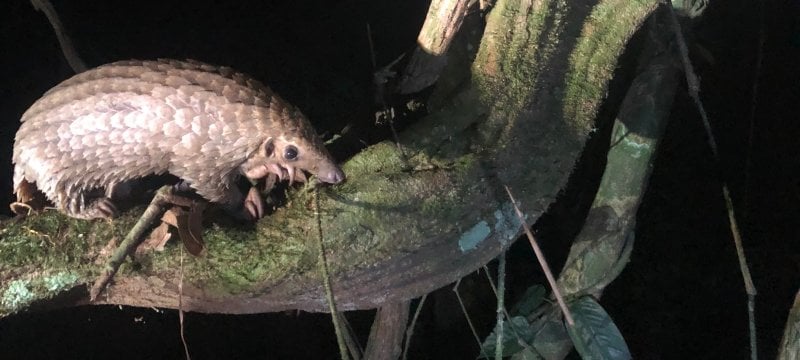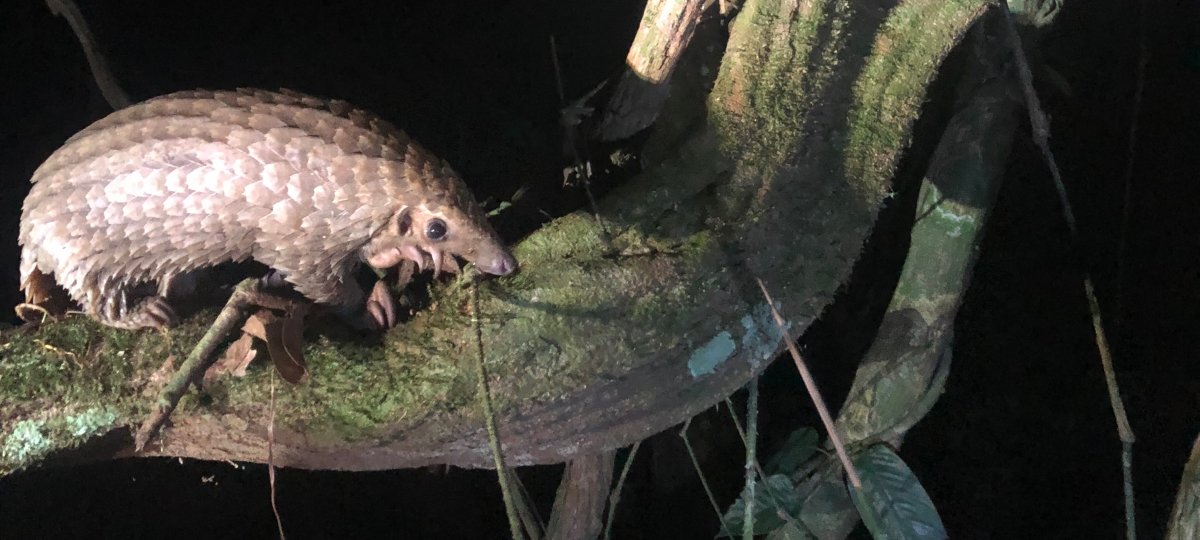Feb. 15 is World Pangolin Day. Michigan Tech wildlife ecologists are working to conserve pangolin habitat in Equatorial Guinea.
Pangolins, a scaly ant-eater native to parts of Africa and Asia, are one of the world’s most heavily trafficked and poached creatures. While they look like armadillos and giant ant-eaters, there are actually eight species of pangolins in their own family. Threats to this reclusive species’ habitat and a general lack of understanding about the unusual animal, combined with high demand for pangolin in African and Asian bushmeat markets, have led to an internationally recognized conservation effort to protect pangolins from extinction.
Giant Pangolin Caught on Camera
A giant pangolin walks past a trap camera in Equatorial Guinea.
Kristin Brzeski, assistant professor in the College of Forest Resources and Environmental Science, and Tiff DeGroot, doctoral student in forest science, use camera traps and a technique known as DNA metabarcoding in the central African nation of Equatorial Guinea. Recording pangolin activity helps conservationists better protect pangolins and their forest habitats.
The forests of Equatorial Guinea are biodiversity hotspots, and yet recent roadbuilding and an illegal but thriving bushmeat trade have degraded and fragmented habitat. Wildlife surveys in the country are unfortunately outdated and inconsistent for pangolin monitoring. Beginning this spring, and building on work undertaken by the Biodiversity Initiative since 2015, Brzeski and DeGroot will survey tree, long-tailed and giant pangolins using a variety of survey methods. Camera trapping provides researchers with insight into pangolin locations and habitat preferences. And by extracting DNA from the stomachs of carrion flies and then assessing what the flies ate, researchers are able to “metabarcode” the vertebrate community the flies feed on. By understanding what flies are eating and the nocturnal wanderings of these armored ant-eaters, researchers can help governments and conservation agencies establish pangolin refuges, which in turn improves biodiversity forest-wide.
Michigan Technological University is an R1 public research university founded in 1885 in Houghton, and is home to nearly 7,500 students from more than 60 countries around the world. Consistently ranked among the best universities in the country for return on investment, Michigan's flagship technological university offers more than 185 undergraduate and graduate degree programs in science and technology, engineering, computing, forestry, business, health professions, humanities, mathematics, social sciences, and the arts. The rural campus is situated just miles from Lake Superior in Michigan's Upper Peninsula, offering year-round opportunities for outdoor adventure.






Comments